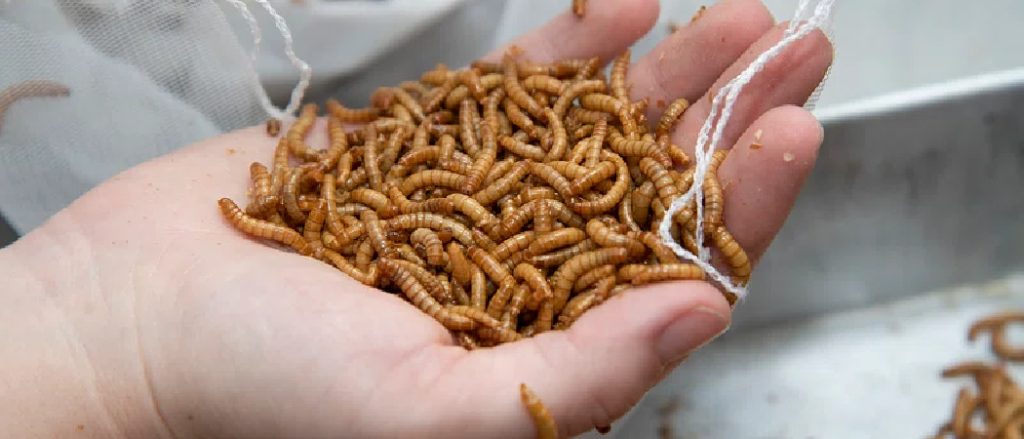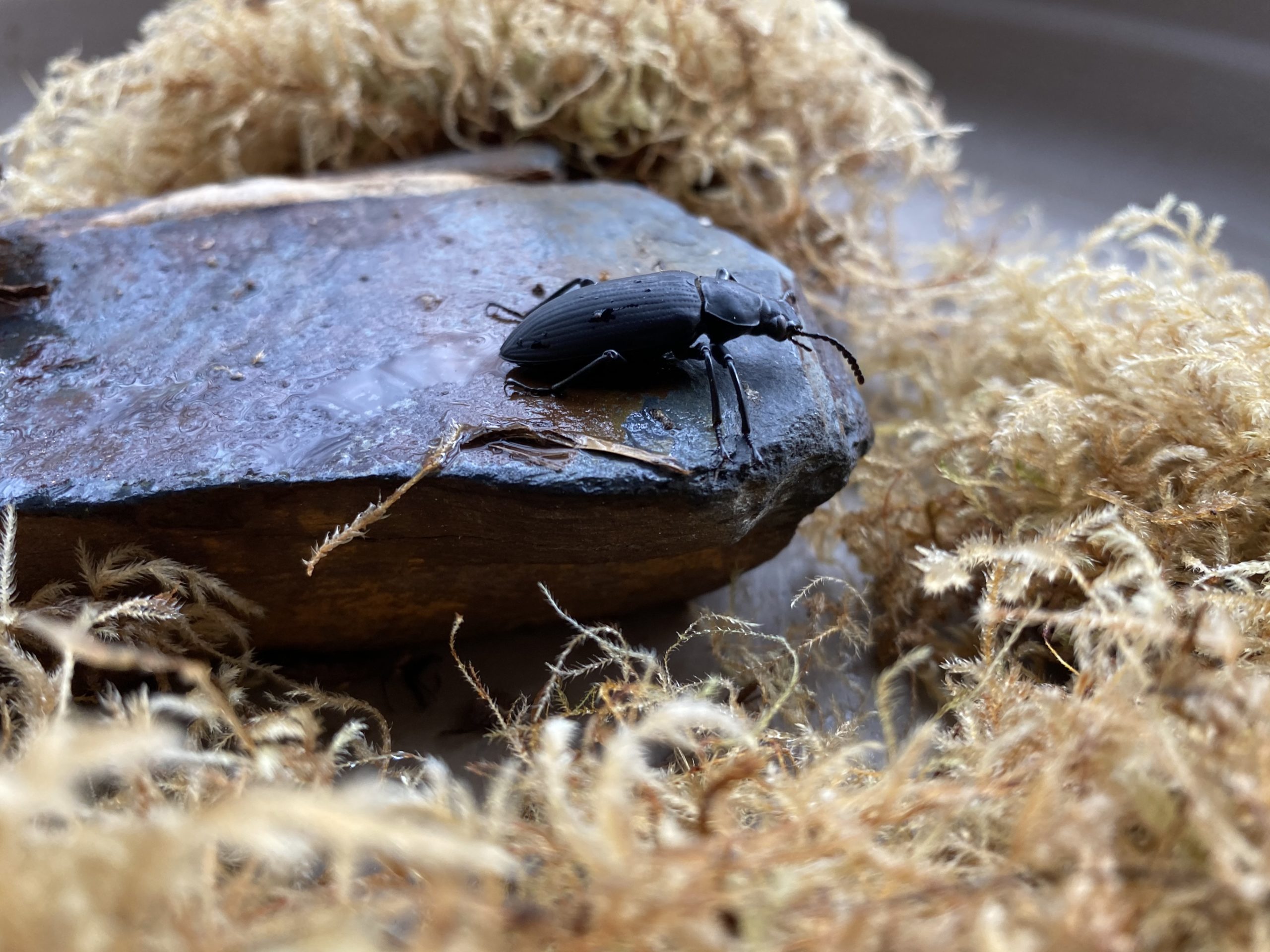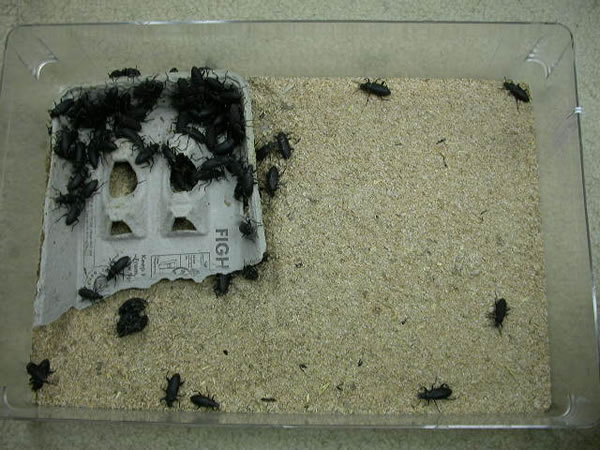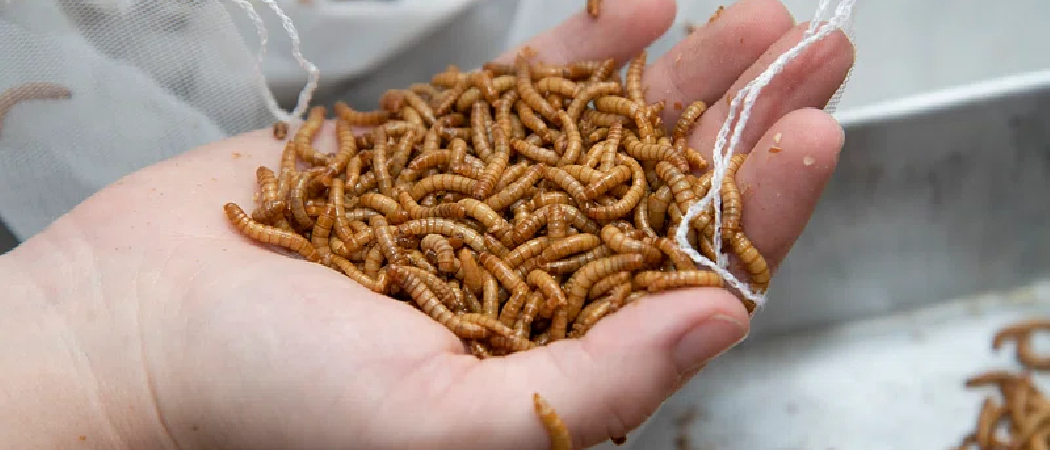Superworms turn into darkling beetles during their life cycle. These beetles are commonly found in pet stores and are a popular choice for feeding reptiles, birds, and other animals.

Superworms are the larvae stage of the darkling beetle and are known for their large size compared to regular mealworms. During their development, superworms go through a series of molts before eventually transforming into darkling beetles. This process usually takes several months and is influenced by factors such as temperature and diet.
The darkling beetles are able to reproduce and lay eggs, restarting the life cycle. We will explore the transformation of superworms into darkling beetles in more detail.

Credit: www.homesciencetools.com
Life Cycle Of Superworms
The life cycle of superworms is an intriguing and fascinating process. From their humble beginnings as tiny eggs, superworms go through several stages of development before transforming into adults. Each stage of their life cycle serves a specific purpose and contributes to their survival and growth. In this section, we will explore each stage in detail, starting with the egg stage.
Egg Stage
The first stage in the life cycle of superworms is the egg stage. Female superworm beetles lay hundreds of small, white eggs. These eggs are usually deposited in dark, moist environments, such as leaf litter or decaying wood. The eggs are glued together in groups and are roughly the size of a pinhead. They have a hard shell that protects the developing larvae inside.
Larva Stage
Once the eggs hatch, the superworm larvae, also known as larvae or grubs, emerge. At this stage, the superworms are small, whitish worms with six tiny legs near their heads. They are voracious eaters, feeding on decaying organic matter, including fruits and vegetables. Superworm larvae continuously molt, shedding their old exoskeletons to accommodate their growing bodies. With each molt, the larvae become larger and darker in color.
Pupa Stage
After several molts, the superworm larvae enter the pupa stage. They undergo a remarkable transformation during this stage, where they stop feeding and become inactive. The pupae are motionless, with their bodies curled into a ‘C’ shape. Within the pupa, the larvae undergo a process called metamorphosis, during which their tissues and organs are reorganized and transformed into their adult form. This stage can last anywhere from a few days to a few weeks, depending on environmental conditions.
Adult Stage
When the transformation is complete, the pupa splits open, and the adult superworm beetle emerges. The adult beetles have elongated, dark bodies with hard outer shells and a pair of small wings. Although they have wings, they are not strong fliers and are more adept at crawling. The primary purpose of the adult stage is reproduction. Male and female superworm beetles mate, and the females lay eggs to start the cycle once again.
In summary, the life cycle of superworms consists of four distinct stages: egg, larva, pupa, and adult. Each stage plays a crucial role in the development, survival, and reproduction of these fascinating creatures.

Credit: lindsaywildlife.org
Characteristics Of Each Life Stage
Superworms go through several life stages, starting as eggs and then transforming into larvae, pupae, and finally becoming adult beetles. Each stage brings unique characteristics and changes as they grow and develop.
Egg Stage
The egg stage is the first and earliest stage in the life cycle of superworms. During this stage, the female superworm lays small and elongated eggs. These eggs are usually white or cream-colored and are around 1 to 2 millimeters in size. The female typically deposits her eggs in dark and moist areas, such as crevices in wood or soil. The eggs have a protective outer shell that helps them withstand different environmental conditions.
Larva Stage
After an incubation period of around 2 to 4 weeks, the eggs hatch into larvae, which is the second stage of the superworm’s life cycle. The larvae are tiny and pale in color, measuring only a few millimeters in length. As they grow, their bodies become more elongated and darker. The larvae have a soft exoskeleton and multiple segments covered in tiny hairs. They also exhibit distinctive distinguishing features such as their six legs and distinct head capsules.
Pupa Stage
During the pupa stage, superworms undergo a remarkable transformation. The larvae enter this stage by finding a suitable spot and creating a cocoon or pupal case, which serves as protection during their development. Inside the pupal case, the larvae undergo metamorphosis, transforming into their adult form. This process can take anywhere from 3 to 14 days, depending on various factors such as temperature and humidity.
Adult Stage
Finally, after the completion of the pupa stage, the superworms emerge as adults. At this stage, they are fully developed and capable of reproduction. The adults have a distinct appearance, with a dark brown or black exoskeleton and a segmented body. They have six legs and two pairs of wings, although they are not strong fliers. Superworms in their adult stage have a lifespan of about 2 to 3 months, during which they mate and lay eggs to start the life cycle again.

Credit: geckotime.com
Frequently Asked Questions For What Does Superworms Turn Into
Do Superworm Beetles Bite?
Superworm beetles do not bite as they predominantly feed on decaying organic matter. They are not known to have any harmful effects on humans.
Are Superworm Beetles Poisonous?
No, superworm beetles are not poisonous. These beetles do not pose any harm or danger to humans or other animals.
Do Humans Eat Superworms?
Yes, humans can eat superworms. Superworms are edible insects that can be eaten by people.
Are Darkling Beetles Harmful?
Darkling beetles are not harmful and pose no direct threat to humans. They are actually beneficial in breaking down organic matter, helping with decomposition and nutrient cycling in ecosystems. However, some species can become pests in agricultural settings, causing damage to crops and stored grain.
Conclusion
Superworms, resilient and adaptable creatures, undergo a fascinating transformation as they grow. From their initial worm-like form, they evolve into darkling beetles – a remarkable metamorphosis. Understanding this transformation is not only intriguing but also important for those who keep superworms as pets or use them as a food source for other animals.
By grasping the life cycle of superworms, we can provide the best care and ensure their continued existence. So, whether you’re a hobbyist or simply curious about nature’s wonders, delving into the world of superworms promises to be an enlightening adventure.


